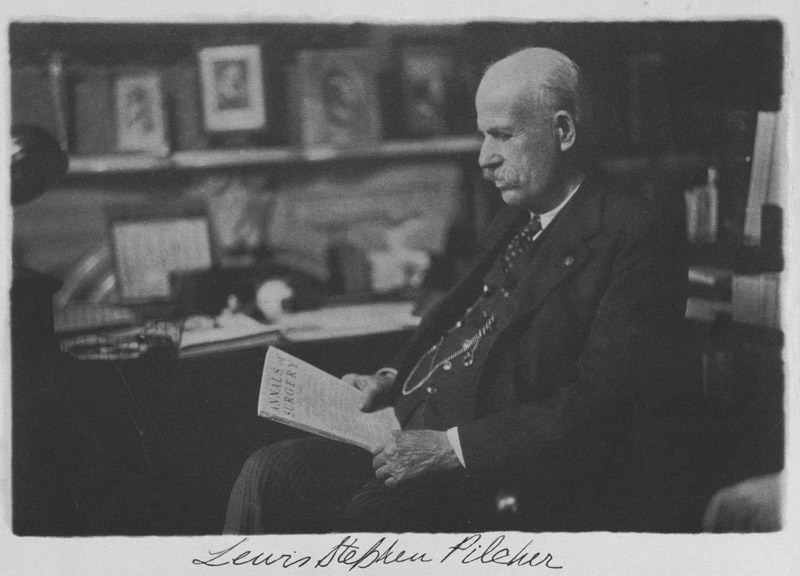Astonishingly, Lewis Stephen Pilcher II (1845–1934) held four degrees from his alma mater, the University of Michigan: A.B., M.A., M.D., and L.L.D. At the age of 27, Dr. Pilcher began his medical career in a private surgical practice in Brooklyn, New York. This was followed by a series of positions whereby he acquired substantial experience as a surgeon. After returning to New York, he partnered with Dr. George R. Fowler to establish the Brooklyn Anatomical and Surgical Society in 1878. The initial objectives of this society were to promote the study of anatomy and surgery by having the appropriate space for dissections, seminar rooms, a museum, and a research library. In 1884, this innovative institution was renamed the Brooklyn Surgical Society, an organization that is still active today. However, within the medical profession, Dr. Pilcher is probably best known as the founding American editor of The Annals of Surgery, first published in January 1885. Dr. Pilcher continued as editor of the journal for the next 50 years.
To this remarkable career as a surgeon, journal editor, and teacher, we need to add his passion as a bibliophile and avid collector of antiquarian books illustrating the early history of medicine, particularly the development of surgery and anatomy in the fifteenth, sixteenth, and seventeenth centuries. His first gift to the University of Michigan Library, a copy of Adrianus Spigelius’ works printed in Amsterdam in 1645, was bequeathed to the so called Rare Book Room in September of 1925. This gift was followed by the bulk of Dr. Pilcher’s collection, which had been described in A List of Books by Some of the Old Masters of Medicine and Surgery, Together with Books on the History of Medicine and on Medical Biography in the Possession of Lewis Stephen Pilcher. After the publication of this catalogue, Dr. Pilcher continued purchasing books, which were donated to the U-M Library between 1929 and 1933. At the time of Dr. Pilcher’s death in 1934, his collection reached a total of 426 volumes.
Though the collection includes ten important books printed in the fifteenth century (incunables), including the editio princeps of Celsus’ De medicina, printed in Florence in 1478, the greatest treasures are the sixteenth-century imprints, such as the first collected edition of the works of the famous French surgeon Ambroise Paré, published in Paris in 1575, and the editio princeps of Galen’s complete works, published in Venice in 1525. Given his expertise in anatomy and surgery, Dr. Pilcher built an extensive collection of books by and about Andreas Vesalius, the most influential anatomist and physician of the sixteenth century. It contains the first two editions of Vesalius’ masterpiece, De humani corporis fabrica libri septem, published by Johannes Oporinus in Basel in 1543 and 1555, respectively. The Collection also holds the very rare De humani corporis fabrica epitome (1543), a collection of bound anatomical broadsides whose publication Vesalius himself had planned as an affordable teaching tool for the use of students.
Other important books include editions of William Harvey’s treatise on the circulation of the blood, Exercitatio anatomica de motu cordis et sanguinis in animalibus, which perfectly complement the first edition published in 1628. And finally, we should also mention a collecting interest at the end of Dr. Pilcher’s life: the medical books printed by the Elzeviers, a sixteenth-century dynasty of Dutch printers who for the next two centuries flooded the European market with high-quality printed books in small sizes and at very affordable prices.


